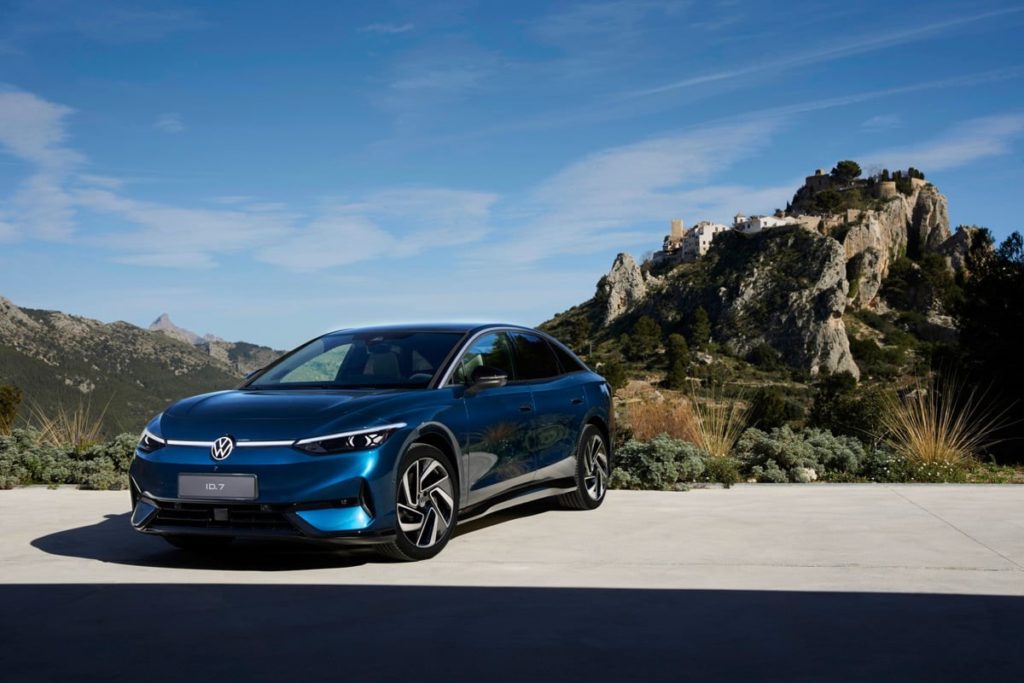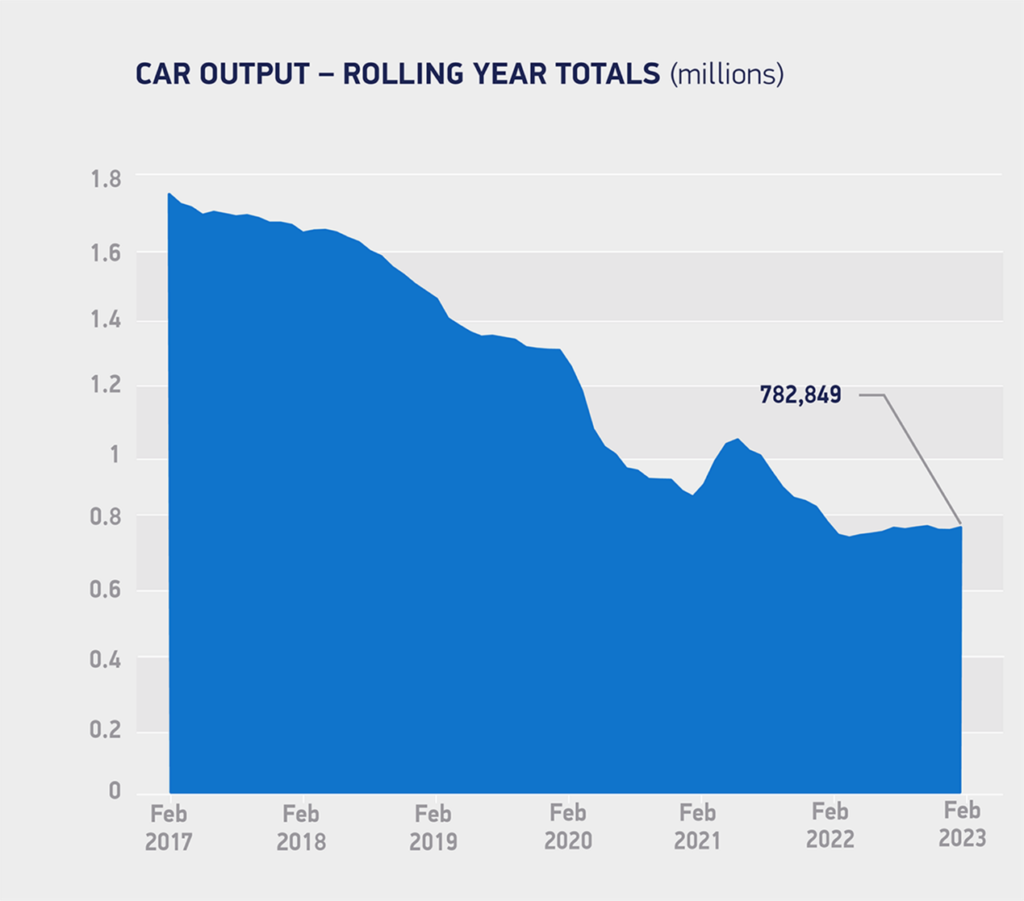Saturday, 8. April 2023
Tesla’s January price cut could not have come at a worse time for the used electric vehicle (EV) market, with the full impact not yet known, according to pricing experts.
The manufacturer announced overnight it was cutting the prices on the Model Y and Model 3 by thousands of pounds.
Price reductions were introduced in the US and European markets, with the Model 3 falling to £42,990 and the Model Y to £44,990, representing drops of £5,550 and £7,000 respectively, for the entry level models.
Prices were also reduced by as much as £8,000 on models higher in the range like the Model Y Performance.
Tesla’s price drop, however, comes after prices were increased last year. The manufacturer upped the prices of the Model 3 and Model Y in the UK by more than 4% – £2,300 on average – in June 2022.
Then the entry-level rear-wheel drive Tesla Model 3 saloon was the subject of a £2,500 price increase from £45,990 to £48,490, while the long-range variant of the Tesla Model Y SUV increased by £2,000 from £55,990 to £57,990.
Following the recent reduction, however, the price of a one-year-old standard range used Tesla fell by £1,400 overnight, from an average of £38,994 on January 15, to £37,599 on January 16, according to data from Auto Trader.
USED EV MARKET
Philip Nothard, insight and strategy director at Cox Automotive, told Fleet News: “With volumes of used EVs entering the market increasing by a reported 800% at the end of 2022, Tesla’s re-pricing strategy couldn’t have come at a worse time and the ripples have yet to reach the shore.
“Tesla has a different strategy from incumbent OEMs and is apparently less concerned about residual values (RVs) than its peers.
“It doesn’t have the same retail infrastructure as the incumbents, and, while that has many observers scratching their heads about how used Teslas will fare in the used market, it also means they don’t have retailers to appease either.”
However, Nothard added: “If any OEM can navigate these stormy waters, it’s probably Tesla.”
The used battery electric vehicle (BEV) market, while recording its best-ever annual performance last year with a record 71,071 units sold, a rise of 37.5%, still represents a small proportion of overall used sales.
Used BEV transactions equated to just 1% of the used market in 2022, up from 0.7% in 2021. Sales of hybrid electric vehicles (HEVs) rose 8.6% and plug-in hybrid electric vehicle (PHEVs) transactions were up 3.6%.
Combined, they represented 4.1% of the market (up from 3.3% in 2021).
NEGATIVE IMPACT ON RVs
In such a fledgling market, dramatic reductions in used values for BEV models, not just Tesla, have been reported on some models in recent weeks, according to Cap HPI.
It says that the fall in RVs was entirely expected as part of a market adjustment to values that were previously unsustainably high and does not herald a collapse in demand for BEVs.
The used value for a one-year-old Tesla Model 3 long range with 20,000 miles on the clock has fallen by £11,600, or more than 25%, since the middle of September.
Dylan Setterfield, head of forecast strategy at Cap HPI, explained: “Used values for many BEV models were strong through 2022.
“In many cases, nearly-new retail values were above list price, some by a considerable margin.
“This was clearly unsustainable and our forecasts reflected that, with large negative adjustments applied.”
Looking beyond Tesla, Nothard says there is no doubt that used EVs are under “scrutiny and pressure”, and they will be so for the foreseeable future.
He explained: “It’s a complex landscape with a demand versus supply imbalance, the price disparity between EV and ICE (internal combustion engine) and ongoing consumer concerns about charging infrastructure is coinciding with inflation and a cost-of-living crisis.”
However, he stressed: “It’s important to remember that all used vehicles, including electric ones, increased in value post-pandemic because of the shortage of new cars in the market. So, while we are in a depreciating marketplace with values dropping, prices remain inside the expected parameters in the main.
“The other dynamic we’re seeing is a firming up of ICE vehicle values. As we enter a third year in new vehicle supply shortages, coupled with a decline in the number of petrol and diesel derivatives in the overall new vehicle parc, we could see used ICE values increase as demand remains strong.”
He added: “We still have to determine used EVs’ final position in the market, and there may be some pain before finding the right level. But their prices will stabilise at some juncture – it’s a matter of when and not if.”
Jon Lawes, managing director at Novuna Vehicle Solutions, told Fleet News the used EV market had experienced price drops in recent months as the number of used vehicles returning to the market started to increase.
“The decrease in Tesla list prices looks like it has had a negative impact on confidence, but, in many cases, the used value reductions have just shifted models to more sensible levels,” he said.
“In general, EVs still command a significant premium over comparable ICE vehicles and, while the Tesla price drop may have shaken confidence in the market today, leasing companies are forecasting residual values for three-and-four-years’ time for new contracts.
“Price reductions are bound to be a hurdle to navigate on the road to EV mass adoption.”
FLEETS MANAGE FALLOUT
Lorna McAtear, fleet manager at National Grid, told Fleet News at 10, that, following the Tesla price cut, she had received a “barrage” of emails.
“Tesla is one of those companies that, as a fleet manager, you love and hate in equal measures,” she said.
“It’s an absolute headache, but we will end up with more vehicles back in price brackets that our drivers can get a hold of again in their banding.”
Meanwhile, Association of Fleet Professionals (AFP) chair Paul Hollick says both leasing companies and fleet managers hoped it would have been more of a “contained change”.
“It just got dropped on us, which, for me, proves that Tesla is not a car for corporate fleets,” he said. “It’s a retail solution.”
Hollick says it could also be an issue for those that have just bought Teslas or have them on order at previous prices.
“The differences between the new and the old prices are substantial, and a move of this kind does, unavoidably, create ill-feeling,” he said.
“The company would do well to introduce some kind of redress.”
A Tesla spokesperson said that any customers with orders should contact their sales representative to discuss the price changes.
In a statement, Tesla said: “Our focus on continuous product improvement through original engineering and manufacturing processes has further optimised our ability to make the best product for an industry-leading cost.
“As we exit what has been a turbulent year of supply chain disruptions, we have observed a normalisation of some of the cost inflation, giving us the confidence to pass these through to our customers.”
Lawes believes that Tesla’s price drop is a sign that they are facing competition from existing and new entrants, and the recognition of a price point that could be unattainable to many. “The demand for their product is still there, they just need their target audience to be able to access it,” he said.
NOT FOLLOWING TESLA’S LEAD
The Tesla Model Y was the most popular EV in Europe in 2022, according to data from Jato Dynamics.
The manufacturer sold 137,052 Model Ys in Europe giving it significant headway against rival vehicles. The second best-selling EV was the Tesla Model 3, with 91,475 registrations.
However, Tesla’s combined performance was not enough to secure the position of leading EV manufacturer.
Volkswagen Group was the best-performing brand by volume, with 349,200 EVs registered across Europe in 2022.
Fleets hoping that other EV makers would follow Tesla’s lead in cutting the prices of plug-in products will be left disappointed.
Stellantis, the parent company of several major brands, including Vauxhall, Citroën, Peugeot, Fiat and Alfa Romeo, told Fleet News it had “no plans” to follow Tesla’s lead by cutting prices.
It was a similar story at Volkswagen Group, responsible for VW, Audi, Škoda and Seat brands, which confirmed it would not be cutting plug-in prices any time soon.
“Our BEV order backlogs carry well into 2023, with some models already sold out for 2023,” said a VW Group spokesperson. “Our priority now is to deliver the vehicles to customers.
“We will continue to closely monitor further developments in both the cost and market situation for all-electric vehicles in all core markets and take appropriate action if necessary.
“As a matter of principle, we do not focus on the quantity of our business, but on its quality. High profitability, therefore, takes precedence over high volumes.”
Kia UK also has no plans to cut prices on any of its current EVs. A Kia spokesperson said: “We believe to do so would be detrimental to our relationships with private and fleet customers, and the residual values of our vehicles.”
Ford announced it was cutting prices of its electric Mustang Mach-E crossover weeks after the Tesla announcement.
However, its decision to lower pricing of the Mach-E by an average of about $4,500 (approx. £3,700), dependent on the model, will only be available in the US. By Graham Hill thanks to Fleet News
Share My Blogs With Others:
These icons link to social bookmarking sites where readers can share and discover new web pages.

























